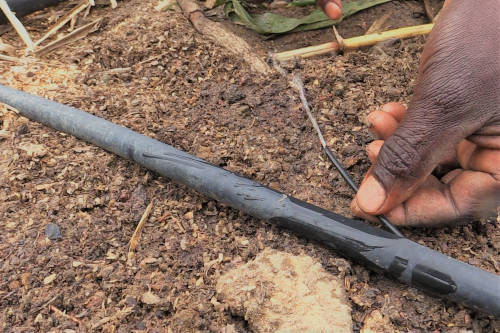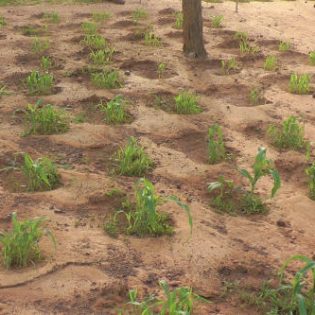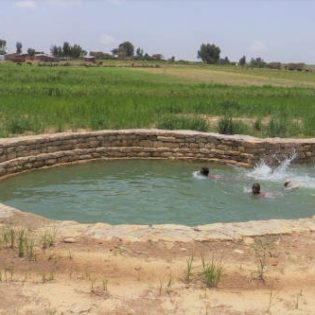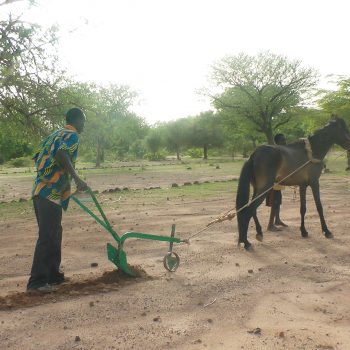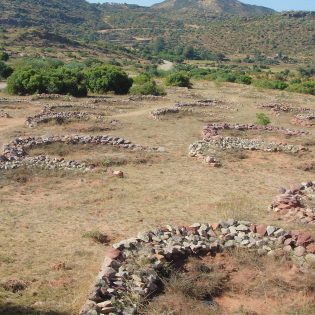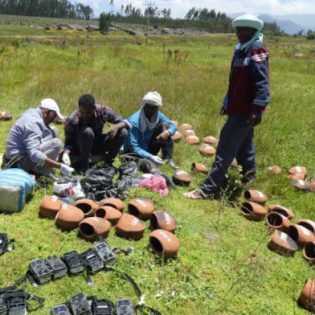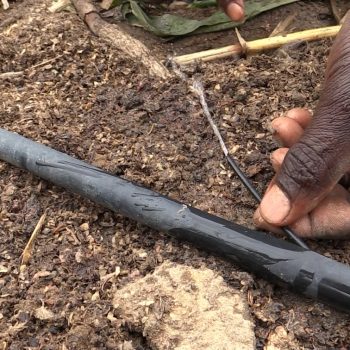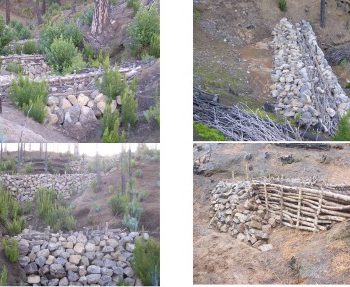| Rootzone irrigation is an irrigation system buried below the soils surface. Systems can consist of (low-pressure) drip tubes, buried diffusers or clay pots (pitcher method). It can be installed for the purposes of growing tree crops and orchards as well as in permanent high-production (high-value) crop growing setups such as for horticulture or fruit crops. Rootzone or sub-irrigation considerably reduces the amount of evaporation from the soils and with that (particularly in arid climates or in open-soil greenhouses) also the accumulation of salts at the surface. It also reduces weed growth (as soil surfaces are not continuously wetted) and keeps infrastructure in the field out of the way and out of sight, which reduces the damages as a cause of field activities or theft. Comparing with surface irrigation systems and their common effects such as crusting, saturated conditions of ponding water, and potential surface runoff (including soil erosion) are eliminated when using subsurface irrigation (Reich et al., n.d.). This type of irrigation system does come with a high-labour and often high-capital investment to start off with, however there are also low-cost developments.
One of these low-cost systems is the System of Water for Agriculture Rejuvenation (SWAR), whereby low-cost drip systems are combined with unglazed clay plots that have diffusers which provides for a combination of wetting and sweating at the rootzone of the crops. This has an advantage over conventional drip systems as water efficiency is even higher and by providing precision water to the tree roots water is reduce water application with 30-70%, and as literature suggests ‘as much as 10 times’ higher plant root efficiency ‘than conventional surface irrigation’ (Bainbridge, 2001). SWAR also encourages deeper root development which makes plants more resilient to drought events. (Gebru et al., 2018) describe how bar-shaped clay pots performed in comparison with furrow irrigation on tomato, pepper, and Swiss chard, with yields increasing up to 32, 30 and 51% respectively and water savings for all by 41%. Separately (Hsiao et al., 2007) describes subsurface trickle systems that eliminate most if not all of the E loss (direct or from the soils surface). Finally, studies have shown that up to 40% total water savings (compared to surface irrigation) without compromising yield capacity can be attained through subsurface drip irrigation. In addition, systems such as micro irrigation allow for optimal root zone management of water, fertilizer and pesticides, reducing the leaching and runoff and reducing the subsequent pollution from these substances.
| References: |
Bainbridge, D.A. (2001). Buried clay pot irrigation: A little known but very efficient traditional method of irrigation. Agricultural Water Management, 48(2), 79–88. https://doi.org/10.1016/S0378-3774(00)00119-0
Gebru, A.A., Araya, A., Habtu, S., Wolde-Georgis, T., Teka, D., & Martorano, L.G. (2018). Evaluating water productivity of tomato, pepper and Swiss chard under clay pot and furrow irrigation technologies in semi-arid areas of northern Ethiopia. International Journal of Water, 12(1), 54–65. https://doi.org/10.1504/IJW.2018.090188
Hsiao, T.C., Steduto, P. & Fereres, E.A. (2007) systematic and quantitative approach to improve water use efficiency in agriculture. Irrig Sci 25, 209–231. https://doi.org/10.1007/s00271-007-0063-2.
Reich, D., Godin, R., Chávez, J.L., Broner, I. (n.d.). Subsurface Drip Irrigation (SDI) (Crop Series, Issue Fact Sheet No. 4.716). https://extension.colostate.edu/docs/pubs/crops/04716.pdf |
| Additional sources |
Video: SWAR: Irrigation at the Roots (https://thewaterchannel.tv/videos/swar-irrigation-at-the-roots/)
Subsurface Drip Irrigation (https://extension.colostate.edu/docs/pubs/crops/04716.pdf) |
|
